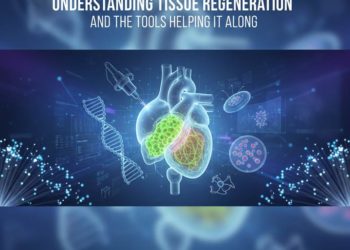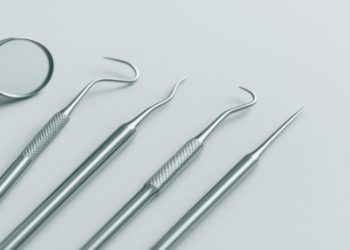Throughout history, humans have continually sought ways to restore and enhance their oral health, leading to the fascinating evolution of dental implants. From early rudimentary methods to cutting-edge innovations, dental implants have undergone significant transformations. These advancements in dental technology not only aim to provide functional solutions but also seek to enhance the aesthetic appeal of patients’ smiles. This journey through time reveals the remarkable ingenuity in the development of dental implants, tracing back to ancient civilizations and advancing into the modern era where All On 4 Dental Implants are leading the charge in groundbreaking dental procedures.
EARLY ATTEMPTS AT TOOTH REPLACEMENT
In the early days of human civilization, the loss of teeth due to injury or decay was a common issue that affected both appearance and functionality. Archeological evidence suggests that ancient cultures, such as the Egyptians and the Etruscans, experimented with various materials to replace missing teeth. Egyptian mummies have been found with gold wires used to stabilize teeth, while the Etruscans mastered the art of crafting dentures using cadaver teeth or animal teeth. Although successful to an extent, these early attempts were rudimentary and lacked the durability and integration seen in modern dental implants.
Meanwhile, in ancient China, records from over 4,000 years ago indicate the use of bamboo pegs as a technique to stabilize teeth. This practice showcases the creativity and resourcefulness humans have displayed throughout history in addressing dental problems. While these efforts were not implants in the modern sense, they laid the groundwork for future developments by highlighting the importance of finding stable materials and methods to support dental health.
THE BIRTH OF MODERN DENTAL IMPLANTS
The concept of modern dental implants took a significant leap forward in the 20th century. In 1952, a landmark discovery by Swedish orthopedic surgeon Dr. Per-Ingvar Brånemark changed the trajectory of dental implantology. During an experiment, Brånemark observed that titanium had the unique ability to bond with bone tissue, a phenomenon he termed “osseointegration.” This discovery paved the way for the use of titanium in dental implants, offering a stable and durable foundation for artificial teeth.
Following this breakthrough, the first titanium dental implants were successfully placed in a human volunteer in 1965. The implants demonstrated remarkable longevity and stability, which bolstered confidence in their potential as a reliable solution for tooth replacement. Over time, refinements in technology and techniques led to the development of various implant designs, enhancing both the success rates and the aesthetics of dental restorations.
IMPROVEMENTS IN IMPLANT DESIGN AND MATERIALS
As dental implantology evolved, so did the designs and materials used in these restorative devices. Initially, dental implants were limited to simple cylindrical or screw shapes, but research into biomechanics and material science soon allowed for the innovation of more complex and anatomically compatible designs. These designs aimed to mimic the natural structure of teeth, improving both function and aesthetics.
Materials science also played a crucial role in the advancement of dental implants. While titanium remained a staple due to its biocompatibility and osseointegration properties, other materials such as zirconia emerged as alternatives. Known for its aesthetic advantages, zirconia offers a tooth-colored option for patients, addressing the concern of metal visibility. Ongoing research continues to explore new materials and surface modifications to improve the longevity and success rates of dental implants.
ADVANCEMENTS IN IMPLANT TECHNIQUES
Alongside improvements in implant design and materials, advancements in surgical techniques have significantly enhanced the success rates of dental implants. The traditional two-stage surgical approach, where the implant was buried under the gum tissue and later exposed for prosthetic attachment, has given way to more immediate and efficient protocols. Immediate load implants, for instance, allow for the placement of a restoration on the same day as the implant surgery, reducing treatment time and improving patient satisfaction.
Additionally, computer-guided implant placement and minimally invasive surgical techniques have further refined the implantation process. These technologies utilize digital imaging and planning software to enhance precision, resulting in more predictable outcomes and reduced healing times. Such innovations underscore the commitment of the dental community to continuously improve patient experience and treatment success.
THE ROLE OF TECHNOLOGY IN MODERN IMPLANT DENTISTRY
Technology has played an instrumental role in transforming modern implant dentistry. The integration of digital tools has revolutionized every aspect of the implant process, from diagnosis and treatment planning to implant placement and restoration. Cone beam computed tomography (CBCT) provides detailed 3D images of the patient’s oral structures, allowing for accurate assessment and planning. This technology ensures optimal implant positioning, taking into consideration the anatomy of the jawbone and proximity to critical structures such as nerves and sinuses.
Furthermore, computer-aided design and manufacturing (CAD/CAM) technology enables the precise fabrication of implant components and restorations. This results in prosthetics that fit seamlessly with the patient’s dentition, enhancing both function and aesthetics. The digitalization of dentistry has also facilitated improved communication between dental professionals and laboratories, streamlining the workflow and reducing errors.
THE EMERGENCE OF ALL ON 4 DENTAL IMPLANTS
Amidst these technological advancements, the development of All On 4 Dental Implants has garnered significant attention as a transformative solution for edentulous patients. Pioneered by Dr. Paulo Malo in the 1990s, this innovative technique allows for the rehabilitation of an entire arch of teeth using only four strategically placed implants. The All On 4 concept offers several advantages, including reduced treatment time, lower cost, and minimized need for bone grafting procedures.
This approach leverages the strength of the anterior jawbone while angling the posterior implants to maximize support and stability. The immediate loading capability of the All On 4 system ensures that patients receive a temporary fixed prosthesis shortly after implant placement, restoring both function and confidence. As a consequence, All On 4 Dental Implants have become a popular choice among patients seeking a reliable and efficient solution for full arch rehabilitation.
FUTURE TRENDS IN DENTAL IMPLANT TECHNOLOGY
As we look to the future, dental implant technology continues to evolve at a rapid pace. Researchers are exploring innovative materials and surface coatings that promote faster healing and enhanced osseointegration. Bioactive surfaces, for example, are being developed to encourage better integration with surrounding bone tissue and minimize the risk of peri-implantitis—a common cause of implant failure.
Moreover, advancements in regenerative medicine and tissue engineering hold promise for future implant technology. Researchers are investigating methods to regenerate bone and soft tissue around implants, enhancing their stability and longevity. This includes the use of growth factors, stem cells, and biocompatible scaffolds to support tissue regeneration and improve overall implant success rates.
THE IMPACT OF CULTURAL AND SOCIETAL FACTORS
Cultural and societal factors have also played a role in shaping the evolution of dental implants. In many cultures, a complete and healthy set of teeth is not only a symbol of health but also a mark of social standing and attractiveness. As a result, the demand for dental restorative solutions, including implants, has been driven by both functional and aesthetic considerations.
In recent years, the increasing awareness and acceptance of dental implants, along with advancements in cosmetic dentistry, have contributed to their popularity. This cultural shift has prompted a greater focus on patient-centered care, with dentists prioritizing not only the technical aspects of implant placement but also the psychological and emotional needs of their patients.
THE ROLE OF EDUCATION AND TRAINING
The success of dental implant procedures heavily relies on the expertise of the dental professionals performing them. As a consequence, education and training in implantology have become integral components of dental education. Dental schools and continuing education programs provide comprehensive training in implant placement, restoration, and management, equipping practitioners with the skills necessary to achieve optimal patient outcomes.
In addition to formal education, professional dental organizations and societies play a pivotal role in disseminating the latest research and techniques in implantology. Dental conferences, workshops, and peer-reviewed journals serve as platforms for knowledge exchange and collaboration, fostering the continuous advancement of the field.
CONCLUSION
The journey of dental implants, from their ancient roots to the sophisticated solutions available today, is a testament to human ingenuity and the relentless pursuit of health and beauty. The advancements in implant design, materials, technology, and techniques have brought about a new era in dental restoration, offering patients reliable, functional, and aesthetically pleasing solutions. As we look to the future, continued research and innovation promise to further transform the landscape of dental implants, making them more accessible, efficient, and effective than ever before. As a result, dental implants will continue to play a crucial role in enhancing the quality of life for countless individuals worldwide.













































































